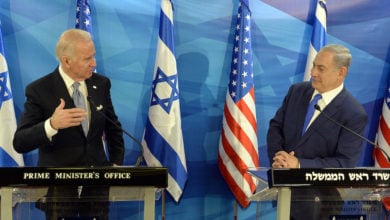On March 31, the trade vehicle INSTEX completed its first transaction by facilitating Iran’s purchase of drugs and pharmaceutical supplies. INSTEX stands for Instrument in Support of Trade Exchanges. It has been set up as a trade vehicle between the European Union and Iran.
Officially, INSTEX was set up in January 2019. However, after long delays, the recent transaction was the first ever. It operates on the basis of barter, whereby Iran buys and sells through INSTEX with no dollar transactions involved. Iran’s trade partners pay into, and receive payments out of, INSTEX, not engaging in direct transactions with Iran.
To understand why a trade vehicle such as INSTEX was set up in the first place, you would have to look back at the Joint Comprehensive Plan of Action. The JCPOA, signed in 2015, was an agreement signed between Iran on one side and the United States, the European Union, Russia and China on the other. The JCPOA would subject Iran to significant restrictions in its nuclear program in exchange for the removal of most of the sanctions.
But on May 8, 2018, the Trump administration illegally withdrew from the JCPOA and immediately re-imposed sanctions on Iran. The U.S. withdrawal was not based on any violations of the agreement, as Iran’s compliance with the terms of the agreement had been regularly certified. Trump simply did not like the agreement. The fact that the U.S. was legally bound by an agreement that its government had signed did not matter.
In the two years since, Iran has gradually pulled away from compliance with the JCPOA, citing the U.S. violation and that it is getting no benefits from it. The U.S. sanctions place heavy fines on any entity, governments or corporations that trade with Iran.
This put the European powers in an embarrassing situation, reduced to a position of merely pleading with the Trump administration. The U.S. unilaterally undid the product of years of negotiations in which the EU3 (Germany, France and the UK) had played a leading role.
The so-called EU3 first simply announced that they would continue to honor the agreement and advised European companies to continue trading with Iran. However, mere pronouncements were not going to have a real impact. Several companies already involved in transactions with Iran pulled out. No company would risk billion-dollar U.S. fines, and the EU3’s verbal reassurances did little to address this concern.
This is when the idea of INSTEX emerged, an instrument to facilitate trade between Iran and the EU to get around the U.S. sanctions. The idea was that Iran and its trade partners would engage in transactions without the exchange of dollars. This way, the trade would be shielded from the U.S. and not subject to U.S. fines.
More threats issued
As expected, Washington strongly condemned the idea and issued more threats. As much as the EU3 wanted to exert some level of independence from Washington, particularly as they are being continuously belittled by the Trump administration in many arenas, they were certainly not eager to go up directly against the U.S.
Therefore, long after INSTEX was conceived as an idea, and its office opened in France, it still remained an idea. It had the official support and blessing of the EU3, but, again, no trade was conducted. INSTEX appeared to be little more than a European stalling tactic in hopes of saving the JCPOA without Iran really receiving any benefits.
But in the late months of 2019, the possibility of INSTEX going operational gained momentum when six other European countries, the Netherlands, Sweden, Norway, Denmark and Belgium, joined INSTEX.
Whether or not INSTEX can turn into an instrument Iran can use widely to meet its trade needs remains to be seen. Will European companies trade with Iran via INSTEX or will they still see this as too risky, fearing a U.S. punishment? That is the key question whose answer will be known in the next few months.
Significant development
In a broader sense, there are reasons to think this is a significant development. INSTEX going operational represents a willingness on the part of Europe to challenge U.S. dominance over international trade. If used for a high volume of trade, INSTEX could blunt the impact of U.S. sanctions on Iran, making it far easier on it to trade for needed supplies. Beyond the specific case of Iran, INSTEX could turn into a model for Europe to neutralize possible future unilateral U.S. sanctions against other countries.
In the post-World-War-II era, the United States was just coming out of the Great Depression, had not sustained any damages to its infrastructure, and was by far the strongest imperialist power in the world. Germany was in ruins; Japan had suffered intense destruction and nuclear bombings; France had just come out of years of Nazi occupation; and the U.K. was deeply in debt and watching its vast empire crumble. Accepting U.S. military, economic and political dominance was the price these imperialists had to pay to get U.S. assistance in saving their endangered system.
Today, 75 years later, U.S. imperialism is not nearly as dominant as it was at that time and its junior partners have attained much stronger positions. Trump’s aggressive and sometimes hostile approach towards European imperialists has likely lit a fire under the Europeans to take more independent action. INSTEX may be the start of a new era in the relationship between the U.S. and Europe.






